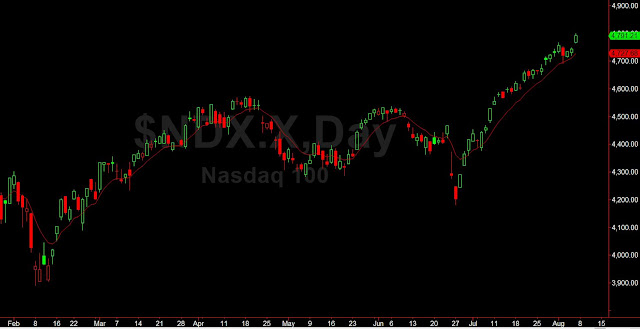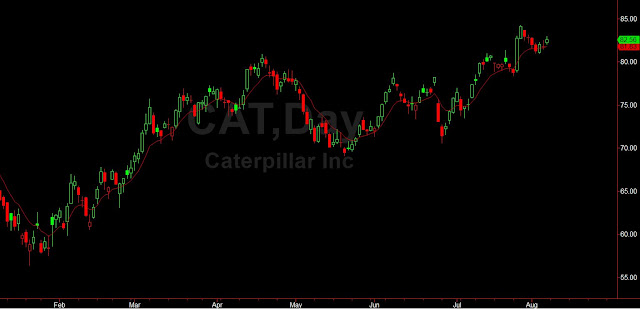I am sure that right now there is very little doubt that we are in negative territory! Not just in the U.S. but all over the world. And, regretfully, we have a long ways to go.
So why is this all necessary? Studying nature (which includes human nature), nothing goes straight up or straight down. If we look at our "barometer" of the mood of society, the stock market, we see it has not gone straight up. It has gone up with pullbacks or setbacks until it continues upward. but notice it DOES eventually continue upward!
It goes in cycles. We evolved in cycles. The climate and weather is in cycles. I have previously talked about the Kondratieff Cycle (Ken's Blog) or the "K Wave" and its four seasons, spring, summer, winter, and fall are part of each cycle.
Here's another view of the most recent cycle. Notice how the market phases change from positive to negative and back to positive.
Although the current 17 year stretch is almost up, I think that it is going to be extended because of the government's attempt to "fix it" and instead screwed it up by throwing in tons of cash. This has only postponed the inevitable. In the meantime, we will continue to see a deterioration in the political climate both in the U.S. and the rest of the world as well as all our economies. As stated in my last blog, we will see the correction to the stock market and a series of events that manifest an angry and disjointed world.
An interesting way of looking at all this from a distance is a term I came across in my reading: it's called "Creative Destruction"(Economics Library). It sounds somewhat like an oxymoron but let's look at what its author Joseph Shumpeter, had to say. He coined it as a shorthand description of the free market's messy way of delivering progress. Here's a chart of how progress has been made so far:
Note the advancement of technologies from the beginning of the Industrial Revolution to now (and beyond). At each top, a new technology arose. But there was a breakdown in between.
A recent example that comes to mind is that of using coal as an energy source. Coal has been used since the beginning of the Industrial Revolution and before. It powered steamships, train locomotives, factories, heated homes and produced electricity. But it has become obsolete, even though there are still tons of it available. It is dirty to burn, difficult and dangerous to mine and expensive to transport. Other energy sources that are cheaper, cleaner burning, and easier to "mine" such as natural gas and oil took its place. But by "destroying" the coal industry, coal miners and auxiliary workers have lost their livelihood. This is a sad but true fact. That's the destroying part of the equation. The "Creative" part of the equation was the development of the new energy sources that created new jobs and new technologies. This creative destruction continues relentlessly by "out with the old and in with the new". We are just starting to see this repeat itself with decreasing our dependence on oil and gas and looking to alternative energy sources such as solar and wind power.
An island off the coast of New England, Block Island, is now generating enough energy with wind power to provide all of its electricity needs. (Deep Water Wind)
Look at the destruction of so many livelihoods when the price of oil went from $100 a barrel to $26 a barrel. This will happen again before this is all over.
The other example that comes to mind is the loss of high paying manufacturing jobs. We have been led to believe that most have gone to other countries. This is only part of the story. Yes, many items are now being made in China, Bangladesh, and Vietnam, but we continue to manufacture many items here in the United States. But compare the factory floors of the 50's to now.
The most obvious fact is, where are all the workers? Well, you don't need to pay these robots; they can work 24 hours a day and they work with precision. So in order to work in the new factories, you have to have totally different work skills. And the companies don't as need many workers. THAT'S where many of the manufacturing jobs went!
So as we go through this period of "Creative Destruction", as we rebuild, we need to develop a whole new mindset. The next cycle period in the chart above says "Holistic Health". I'm not sure what that will entail but it sounds interesting. Whatever "the Next Next Thing" is, it will propel the world's economies and societies higher. We just have to wade through "the swamp" for a while longer.
Best regards,
Ken Knight



















































